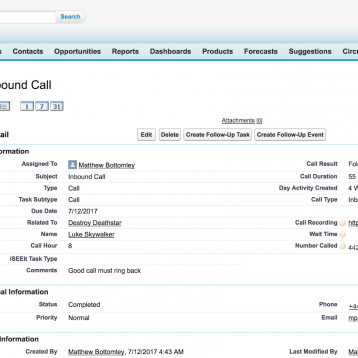Generic collaboration tools including Zoom and Microsoft Teams have enjoyed spectacular growth in usage throughout the pandemic, but Fuze argue that enterprise-scale businesses have special requirements These include: balancing the interests of management and staff; providing access to the business for customers and suppliers AV News reports on a new market research study commissioned by Fuze designed to answer these questions.

The ‘FLEX Study: Global Findings on the Future of Flexible Work’, reinforces the view that organisations and business leaders should not consider flexible work as a ‘one-size-fits-all’ benefit, but a personalised experience that should be tailored to an individual’s unique work preferences, role within their team, industry practices, aligned to goals and expected outcomes, and established through a foundation of trust. A global study of 8,800 workers, which reveals that as flexible work is increasingly viewed as an expectation for the working world
AV News was given the opportunity to discuss the results of the Survey with Clément Wehrung, Director of Product Management at Fuze. Clement has been involved with the questions posed by remote working for more than five years and has some deeply considered views on the subject.
When planning the Survey. it was important to Fuze that it had a broad geographical base. As well as a good range of industries and roles. This inevitably involved a large sample size – 8,800 individuals across the United States, United Kingdom, France and Australia. In terms of industry sectors, respondents were drawn from manufacturing, retail, professional services, financial services, and software and technology. The overall objective was to demonstrate that organisations and business leaders should not consider flexible work as a ‘one-size-fits-all’ benefit, but a personalised experience that should be tailored to an individual’s unique work preferences, role within their team, industry practices, aligned to goals and expected outcomes, and established through a foundation of trust.
The results of the survey point to the fact that flexible work is increasingly viewed as a lasting expectation for the working world, but attitudes continue to vary widely. Some 75% of respondents reported that flexible work should be an essential part of how people work going forward.

Divergent opinions
One of the most interesting dichotomies to emerge in the data is the extent to which the opinions of enterprise management vary as to the trust they place in their workers. 42 per cent of frontline workers believe management is trustworthy of remote work, compared to 62 per cent of office workers. 78 per cent of frontline workers also report that their organisation requires them to be in their current working location versus only 60 per cent of office workers. However, six in 10 (63 per cent) of frontline workers say they would be willing to change jobs for more flexibility.
In fact, in most regions, a full-time return to the office or worksite mandate would result in destabilising job churn. In the UK, US, and Australia, approximately two-thirds of employees (67 per cent) would consider finding a new job for greater flexibility in when and how they work. In France, more than half of employees (57 per cent) would consider finding a new job with greater flexibility.
A matter of trust
Trust in flexible work varies widely across job roles. Across all regions, about half (54per cent of workers think management is more trusting of remote work, while 70 per cent of senior leaders believe management is more trusting, highlighting a gap between management’s new-found trust in remote work and employee perception of that trust. A possible cause here is that support for flexible working is very much ‘on trend’ in management circles.
The gap in trust toward remote work is also reflected by role, with office workers (73 per cent) more likely to say they are more trusting of remote work compared to frontline workers (50 per cent). This may be credited to the lack of flexible work options traditionally offered to frontline workers versus office workers.
As ‘remote-first work persisted for many workers during 2020, a gap in the perception of trust across roles surfaced. While a majority of senior leaders increased their confidence in flexible work, employees who are further away from those leadership roles are not as aligned. Less than half of frontline workers (42per cent trusting of remote work, while 70per cent of senior leaders believe that management is more trusting of remote work. This divide between the roles can set up conflict — if employees feel their leaders don’t back the policy, they’ll feel less comfortable taking advantage of it, or worse, employees could move on to other companies that fully embrace flexible working models.

Productivity
Productivity is often cited as the principal benefit of hybrid working. For those working remotely full-time, 60 per cent say they are more productive at home than they were in the office. However, this feeling of productivity varies across regions with 70 per cent of Australian respondents saying that they felt more productive versus only 52 per cent of UK respondents.
Employees are both more productive and more engaged than companies might think. But the risk of burnout is still a threat. Only 66per cent of respondents said they are ensuring they take a break every day. In addition, a quarter of respondents report that they find themselves working longer hours since they started working remotely. Less effective tools and too many meetings exacerbate that risk.
Burnout also stems from the inability to disconnect. 60per cent of UK respondents were unable to disconnect compared to almost the same amount in the US who said they were able to disconnect and recharge (58per cent). Of those workers who have trouble disconnecting, workers in the UK (23per cent feel the most anxious about getting caught up, while workers in France are most distracted by looking at their phones (23per cent).
Although 60 per cent of respondents working remotely 100per cent of the time said they felt more productive than they did in the office, senior leaders — who spend more of their days in meetings and on strategic tasks, rather than doing tactical, hands-on work — drove some of that response. Also, senior leaders are further in their career, and are able to leverage that experience to be more comfortable and confident in remote-first environments.
People matter
Many years before the pandemic and hybrid working were at the forefront of attention, certain industries and job roles were notorious for their almost infinite flexibility and unstructured work patterns. The media and creative sectors were prime examples and noted for the propensity for key workers to experience burn out. Remote working can extend the ability of home and mobile to ‘over work’.And increasing cause for concern among enterprise managers.
Companies must establish a structure for the workday to prevent burnout. Only 66per cent of respondents say they are ensuring they take a break every day. In addition, a quarter of respondents report that they find themselves working longer hours since they started working remotely. Video meetings are a particular cause for concern because they are not subject to the usual regulation of office hours.
An example quoted in the report described: “The ability for our Account Managers to stay in touch with customers they could no longer see face-to-face was HUGE,” said David Houchins, Telecom Administrator at NB Handy. “And work-from-home options for office employees gave us flexibility we never had in the past.”
There are lots of workers who report being happier working at home or another chosen location, but if their time is completely jammed with meetings, they will quickly become less effective and engaged. In fact, 59per centof our respondents said the ideal time in meetings each day is less than 2 hours. Senior leaders, whose roles often demand more time in meetings, are the exception.
Conclusion
Though the advent of COVID-19 in 2020 demanded companies to immediately pivot to flexible work models — whether they had allowed flexibility in the past or not — the fact is that the pandemic allowed companies and their employees alike to discover the benefits of this approach at all levels.
“Over the last year, the pandemic forced many organizations to digitally transform and embrace flexible work,” said Brian Day, CEO, Fuze. “While office workers have been at the forefront of the flexible work conversation for years, other segments of the workforce are playing a critical role in the movement’s evolution. This study provides organisations with the foundational data required to inform their approach to flexible work and empower employees to be more engaged and productive.”
In most organisations flexible work used to be a negotiated benefit — something addressed on a case-by-case basis, often directly with managers. But now, three in four workers (75per cent) demand flexible work. Even frontline workers, who are less likely to get as much flexibility as office workers, are on board — 68per cent think flexible work should be a standard practice. Workers at all levels want flexibility without taking a pay cut, demotion, or loss of benefits to get it.
64per cent of respondents say the right tools allow them to work more productively outside a company office or worksite. But those tools need to be secure, useful, flexible, and the appropriate ones for the situation. They also need to evolve to meet the needs of workers who traditionally have not relied as heavily on meeting-focused collaboration tools. There are still sizable employee audiences not using these tools to accomplish their work.
The COVID-19 pandemic accelerated the evolution of flexible work faster than anyone could have imagined. As we have begun to emerge from the disruption caused by global lockdowns, many companies have decided to shift their policies and practices permanently. Companies in industries where flexible work was not the norm have had the opportunity to flex new muscles around hybrid ways of working and can measure where these practices are working for them, and where they may still need to adjust further.
When organizations adjust their policies and practices to optimize for flexible work, people thrive. Companies that use this unique moment in history to pivot toward the future of flexible work and innovate and invest in a hybrid work model will see ongoing employee productivity, engagement, and satisfaction.
“As we emerge from the COVID-19 pandemic, the companies that embrace flexible work will be the ones most likely to retain stable workforces, accomplish ambitious goals with the help of engaged employees, and thrive in their respective industries.” – Brian Day, CEO, Fuze
Percentage of workers who felt more productive working remotely than in the office or on site
Senior Leaders: 74%
Office Workers: 59%
Frontline Workers: 50%
Definitions
Roles
• Frontline workers are defined as anyone working in a location other than an office.
• Office workers is an imperfect, evolving term for employees who would traditionally be expected to work from a primary office location.
• Senior leadership is defined as people working at or above director level.
Types of work
• Flexible work describes both where and how employees work.
• Hybrid work describes just the location of that work (in or out of a primary worksite or office).
• Remote work describes working 100 percent away from a primary worksite or office.
Principles of flexibility
There are some key principles to follow to ensure a flexible, healthy work culture:
1.Flexible work is the new operating model. Companies must keep this in mind if they want to attract, win, and retain employees going forward. Flexible work is now either a recruitment tool or a churn risk.
2.It’s the responsibility of organisations to provide the blueprint, tools, and trust for employees to succeed in this new flexible work model. It’s critical that frontline workers are not left behind.
3.Ongoing innovation is key. There is a wave of technology and experiential innovation coming to meet the demands of flexible work. To succeed, companies must continue to invest as they move forward.







